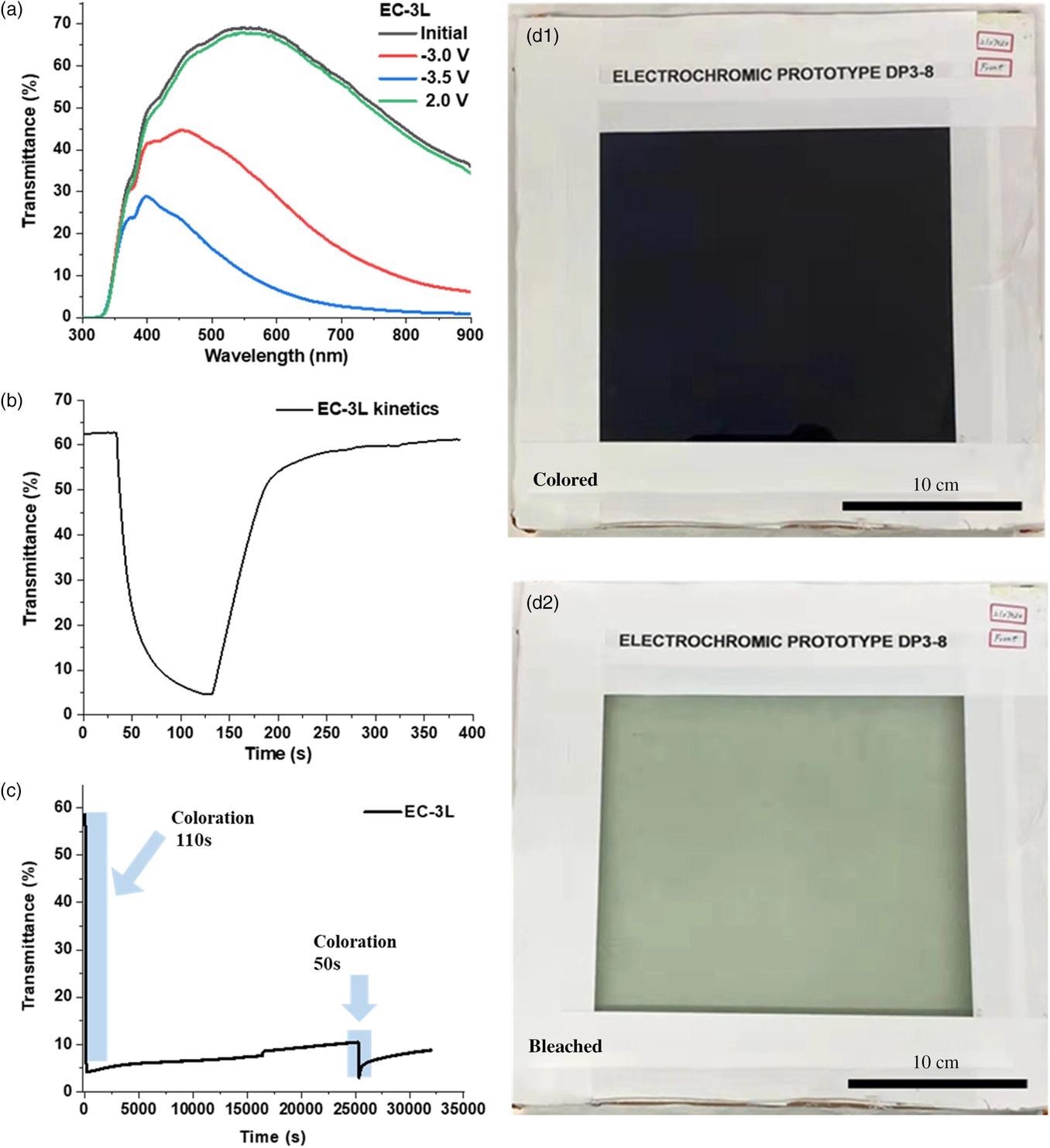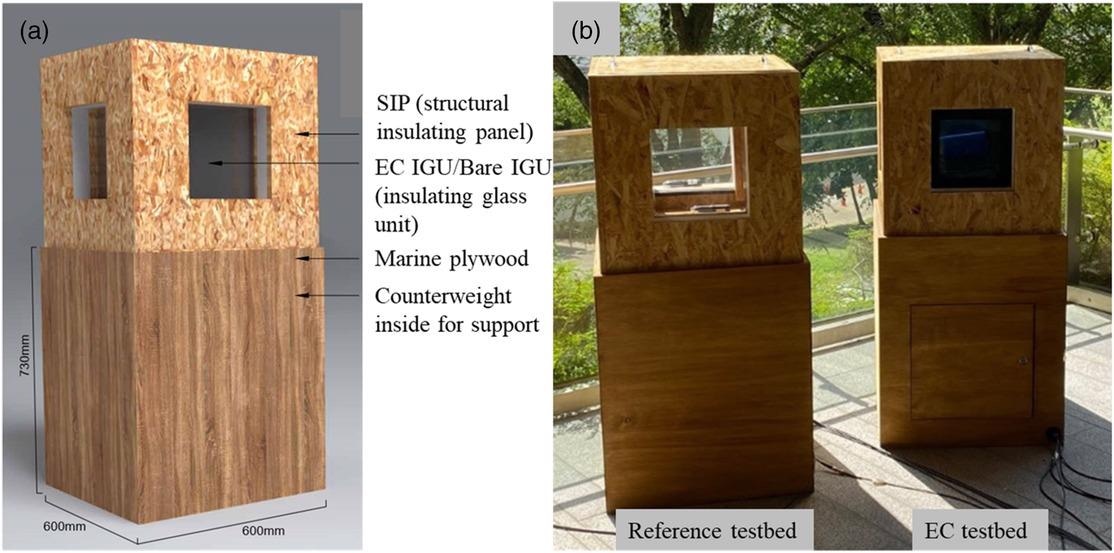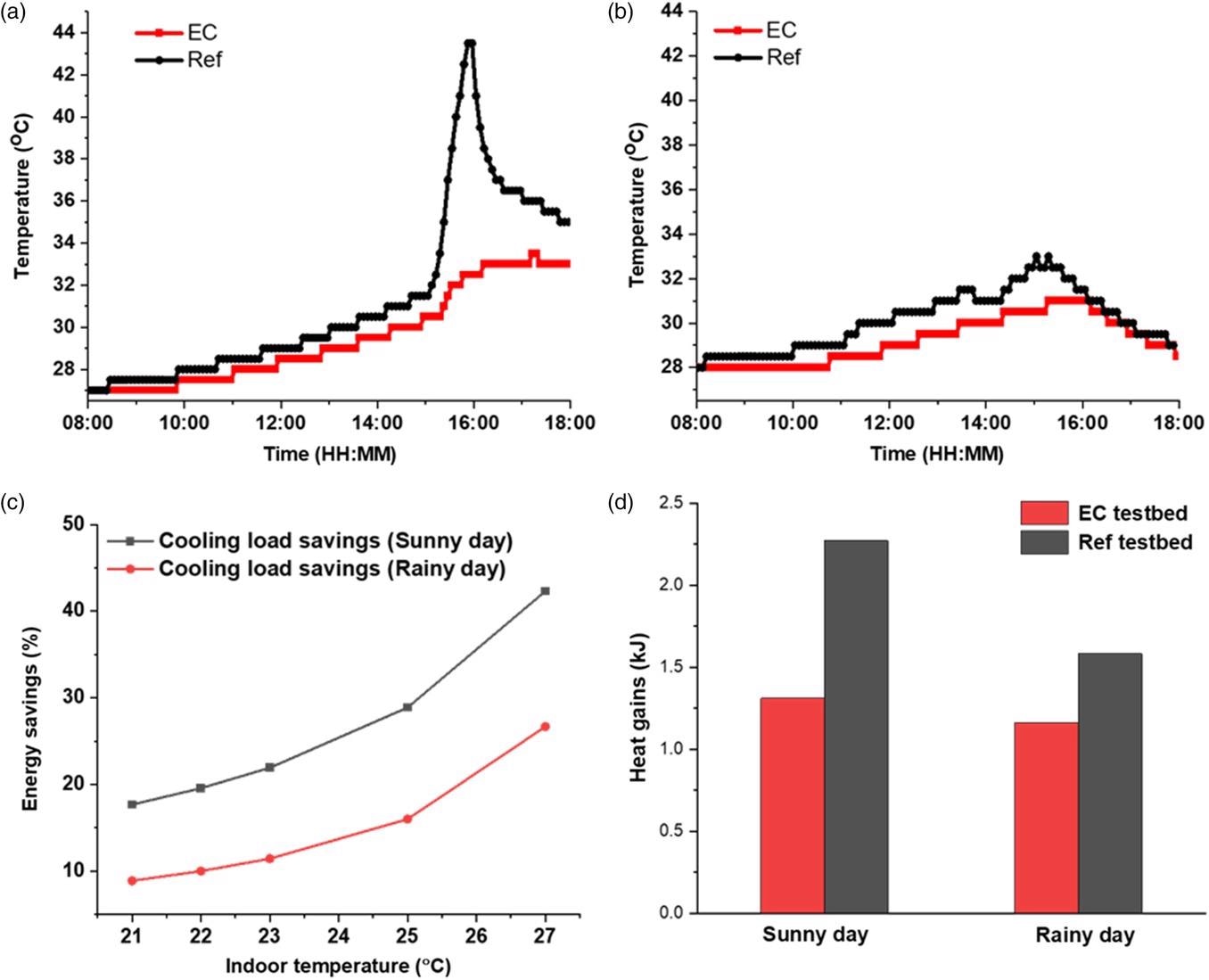A new study presented in the Advanced Energy & Sustainability Research journal has explored the use of electrochromic printed smart windows to help address the growing challenge of energy efficiency in buildings.

Study: Scalable Inkjet Printing of Electrochromic Smart Windows for Building Energy Modulation. Image Credit: GaudiLab/Shutterstock.com
As global greenhouse gases and the need to rise to the challenge of the climate emergency become ever more urgent, it has become vital to explore innovative new approaches to energy efficiency. Research has shown that buildings represent around 30% of annual greenhouse gas emissions and 40% of global energy consumption.
As solar radiation enters buildings through transparent windows, it causes increases in indoor temperatures and prompts building occupants to maintain comfortable working and living environments via the building’s heat, ventilation, and air-conditioning (HVAC) systems.
Similarly, closed or otherwise obscured windows are unable to allow solar radiation to enter, potentially contributing to a building’s low internal temperature and darkness during cold periods or winter months.
HVAC systems are expensive to use and consume a great deal of energy, however, meaning that their use should be kept as minimal as possible and alternative means of regulating buildings’ internal temperatures and levels of natural light should be investigated.

a) Spectrum, b) kinetics, c) transmittance retention of EC-3L, and photographs of EC-3L at d1) colored and d2) bleached states. Image Credit: Chen, J. et al., Adv. Energy Sustainability Res.
Smart windows represent one such alternative approach and a promising step towards sustainable, green buildings. These windows are capable of modulating the amount of solar radiation permitted to enter a building at a given time, therefore reducing the building’s heating and cooling energy needs.
A number of techniques and technologies have thus far been explored in terms of smart windows’ implementation; for example, the use of thermochromic, photochromic, mechanochromic, liquid crystal, and suspended particles.
Among these approaches, electrochromic smart windows have shown excellent promise due to their potential for active control, their high degree of optical contrast, their rapid switching speed, and their long memory retention.
Electrochromic materials offer the ability to change their opacity upon application of a voltage, and electrochromic smart windows have already been shown to reduce up to 70% of building heat gain from solar radiation, with estimates highlighting that these smart windows could lower lighting and HVAC energy consumption by around 20% in buildings.

a) Diagram of the testbed design; b) photographs of the reference testbed (with three walls installed with bare IGU devices) and the EC testbed (with three walls installed with EC-3L IGU devices). Image Credit: Chen, J. et al., Adv. Energy Sustainability Res.
Electrochromic smart glass is also the leading product of its kind in the United States smart glass market, predicted to account for more than one-third of the total smart glass market with projected market size of more than 1 USD billion by 2024.
Despite this already impressive progress and technological potential, the widespread commercialization and adoption of electrochromic smart windows have been hindered by issues around performance, scalability. and cost-effectiveness. Their high costs are partially related to the cost of the vacuum facilities required for large-area electrode deposition.
For example, the maximum market entry price for electrochromic smart windows is approximately 500 USD $ per m2, though this is anticipated to reduce to approximately 100 USD $ per m2 as technology develops and production efficiencies improve.
The paper’s authors reported on the use of a liquid-phase inkjet printing technique to produce large-area electrochromic electrodes. Inkjet printing represents a powerful tool for producing uniform large-area thin films with regulated patternability and thickness.
The authors’ previous projects had leveraged inkjet printing to print continuous and noncontinuous patterned images of NiO- and WO3-based electrochromic films on a range of substrates.
Their current research involves electrochromic devices with areas of 900 cm2 being assembled using inkjet-printed electrochromic films. These smart windows have already exhibited excellent optical contrast, rapid switching, and extended optical memory retention.
Memory retention (or memory effect) is a key advantage of electrochromic smart windows and central to their efficiency. This effect essentially allows the smart window to maintain its colored, more opaque state without continuous voltage application.

Temperature profile in EC and reference testbed in a) sunny (May 10, 2021) and b) rainy (May 4, 2021) days. c) Cooling load savings in sunny and rainy days for various indoor temperature. d) Heat gains in EC and reference testbeds in sunny and rainy days. Image Credit: Chen, J. et al., Adv. Energy Sustainability Res.
The printed electrochromic films’ efficiency and applicability were tested by mounting these onto an outdoor testbed that had been set up to be compliant with a number of pertinent regulations. The internal temperature of the testbed varied in line with weather and seasonal conditions, but the example electrochromic smart windows were able to demonstrate effective energy savings in terms of heat gain and cooling load.
Despite their many advances, the cost of electrochromic smart windows for many commercial and residential properties remains high, remaining out of reach for many low-income areas which would arguably benefit the most from the potential energy and cost savings.
The development of novel, easily scalable, and therefore more cost-effective means of producing electrochromic smart windows – such as the low-cost inkjet printing method outlined in this study - could become a driving factor in their widespread adoption and their potential to have a tangible impact on global energy consumption.
References
Chen, J., Tan, A.W.M., Eh, A.L. and Lee, P.S. (2021), Scalable Inkjet Printing of Electrochromic Smart Windows for Building Energy Modulation. Adv. Energy Sustainability Res. 2100172. https://onlinelibrary.wiley.com/doi/10.1002/aesr.202100172
Disclaimer: The views expressed here are those of the author expressed in their private capacity and do not necessarily represent the views of AZoM.com Limited T/A AZoNetwork the owner and operator of this website. This disclaimer forms part of the Terms and conditions of use of this website.